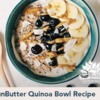You know a healthy diet is important for your child. But what does that diet look like? What if they have food allergies? How do you make sure they get everything they need?
Here is a guide to help you make sure your child is eating a diet that will help them thrive physically and mentally while eating safe foods.
What Should My Child Eat?
Every child needs a good balance of these foods every day to get the nutrients they need:
- Lean protein foods (beef, chicken, turkey, soy, eggs, beans, fish, seafood, nuts)
- Fruits
- Vegetables
- Grains (wheat, rice, oats, corn, barley)
- Dairy or soy
- Healthy fats (mono- and polyunsaturated, like olive oil, canola oil, safflower oil, sunflower oil)
How much they need of these foods depends on their age and activity level. Here are some daily guidelines per age group from ChooseMyPlate.gov.
Ages 4-8
1,200-2,000 calories a day
- Protein – 3-5 ½ ounces
- Fruits – 1-2 cups
- Vegetables – 1 ½-2 ½ cups
- Grains – 4-6 ounces
- Dairy or soy – 2 ½ cups
Ages 9-13
1,600-3,200 calories a day
- Protein – 5-7 ounces
- Fruits – 1 ½-2 ½ cups
- Vegetables – 2-4 cups
- Grains – 5-10 ounces
- Dairy or soy – 3 cups (low-fat or skim)
Ages 14+
1,600-3,200 calories a day
- Protein – 5-7 ounces
- Fruits – 1 ½-2 ½ cups
- Vegetables – 2-4 cups
- Grains – 5-10 ounces
- Dairy or soy – 3 cups (low-fat or skim)
What Do I Do If My Child Has Food Allergies?
When you have a child with a food allergy, your first goal is to prevent reactions. Your second goal is to meet their nutritional needs. Careful substitutions can help you keep your child safe and healthy.
Milk
It’s no question that milk provides a lot of valuable nutrients like protein, calcium, fat and vitamin D. Without milk, children may be shorter and have lower bone density. If your child has a milk allergy, you will need to replace some of these missing nutrients with other foods.
With some creativity, you can give your child other foods that include many of the nutrients milk provides. Soy milk, if your child isn’t allergic, has some of the same nutrients as milk. Calcium can be found in many greens like spinach, kale, broccoli and bok choy.
There are many milk substitutes available. When looking for the best one for your child, check the label to make sure it is enriched and fortified and has at least 8 grams of protein and 30 percent calcium per serving.
Nuts
Nuts contain good fat, fiber and protein. Many of them also contain B vitamins, potassium, calcium, vitamin E and antioxidant minerals. If your child can’t have nuts, you can get some of the same nutrients from olives, pumpkins seeds, sunflower seeds and avocados.
Your child might like a nut butter substitute, like a butter made from roasted sunflower seeds. Sunflower butter contains fiber and protein. It’s also high in vitamins and minerals.
Eggs
Eggs offer a lot of nutrients, fats and protein. One important vitamin we get from eggs is B12. This vitamin is important for brain development. If your child can’t eat eggs, they can get B12 from some fish, shellfish, soy, beef, chicken and milk. If your child is allergic to any of these, as well as eggs, nutritional yeast may be a good addition to their foods.
Wheat
There are several flour and pasta options for children who can’t have wheat. More food manufactures have created options for wheat-free and gluten-free diets than in the past. Make sure your child is getting at least four or more servings of whole, enriched and fortified grains per day.
Quinoa is a great non-wheat option. It has some of the highest protein of any grain and works well hot or cold and for any meal.
Supplements
If your child is allergic to more than one of the top 8 food allergens or is a picky eater, they may need supplements to get all the nutrients they need. Talk to a registered dietitian for advice on what supplements your child needs.
Does My Child Need to Eat Breakfast?
Yes. While every meal is important, breakfast can affect your child’s entire day.
According to food and nutrition consultant Debra Indorato, RDN, LDN, CLT, “It’s important for children to eat breakfast. Studies have shown children who eat a healthy breakfast (not sugary sweet) are more alert and perform better in school and physical activities. It’s even more important for children who have food allergies to eat a good breakfast. Breakfast can provide an abundance of essential nutrients especially if nutrients are missed due to restricting foods due to allergies. Also, it prevents the food allergic child from being hungry and potentially eating foods they are allergic to due to hunger.”
Indorato offers these ideas to make breakfast easier on busy mornings:
- Plan and prep for breakfast the night before. Try after dinner before cleaning up the kitchen. Put non-perishable breakfast foods in place where they are easy to grab in the morning.
- Set your alarm a few minutes earlier to allow time for breakfast.
- If there’s not time for solid foods, make a smoothie. Put all the ingredients in a blender jar the night before in the refrigerator. Blend and serve in the morning.
- Make a breakfast calendar and see who can come up with the best ideas. Have each family member take a colored pencil and write a breakfast idea in the days on the calendar.
- Parents need to have breakfast too. This will set a good example for your child.
How Can I Get My Child to Eat Nutritious Foods?
Getting your child to eat healthy foods is a battle every parent faces. But there are a few ways to encourage your child to eat the nutritious foods you make for them.
- Introduce a new food at least 10 times. Studies show that a child is more likely to eat a food after they’ve been offered it several times.
- Make meals fun. Pick a theme each day when packing their lunch. It can match what they are learning at school, like colors or numbers. Use cookie cutters to cut sandwiches, fruits and vegetables into fun shapes.
- Sneak pureed fruits and vegetables into their food. For example, put carrots or spinach in spaghetti sauce, or add black beans or spinach to brownies. The internet has several recipes that allow you to “hide” healthy foods in your child’s meals.
- Make meals colorful. Colorful fruits and vegetables are packed with vitamins. Try creative ways of serving them. For example, make a rainbow pizza. Take a safe crust, pizza sauce, dairy-free cheese and top them with rows of chopped vegetables like grape tomatoes, orange peppers, yellow squash, broccoli and purple potatoes.
- Involve your child. Ask them to help pick out their meals or pack their lunches. Let them pick their foods from a colorful chart or calendar.
- Keep foods bite sized. Kids tend to like finger foods.
- Focus on what they can have, and not what they can’t have. Your positive attitude toward healthy foods can rub off on them.
- Set an example. Make a commitment as a family to eat healthy, nutritious foods together.
Sunflower Butter and Jelly Energy Bites
Makes about 15
Ingredients
1 scant cup raspberries
1 tablespoon lemon juice
1 tablespoon chia seeds or flaxseed meal
½ cup sunflower butter
⅔ cup gluten-free oats
2 tablespoons brown sugar
Instructions
In a small saucepan, heat the raspberries and lemon juice over low-medium heat, stirring occasionally. While cooking, crush the raspberries until soft, about 10 minutes. Stir in seeds. Set aside to cool.
In a food processor or blender, pulse together sunflower butter, oats and sugar until combined. Scrape mixture into a shallow container.
Gently spread the jam through the mixture but don’t fully combine. Refrigerate for at least 15 minutes.
Roll the mixture into bite-sized balls. Refrigerate for a few hours before serving. Store in the refrigerator or freezer.
Note: Use a small, spring-loaded cookie scoop to make balls the same size.
Total Calories Per Serving (1 bite = 1 serving): 96
Protein: 3 g
Carbohydrate: 10 g
Dietary Fiber: 2 g
Total Sugars: 3 g
Total Fat: 5 g
Saturated Fat: 1 g
Medical Review: August 2017.



Comments (0)